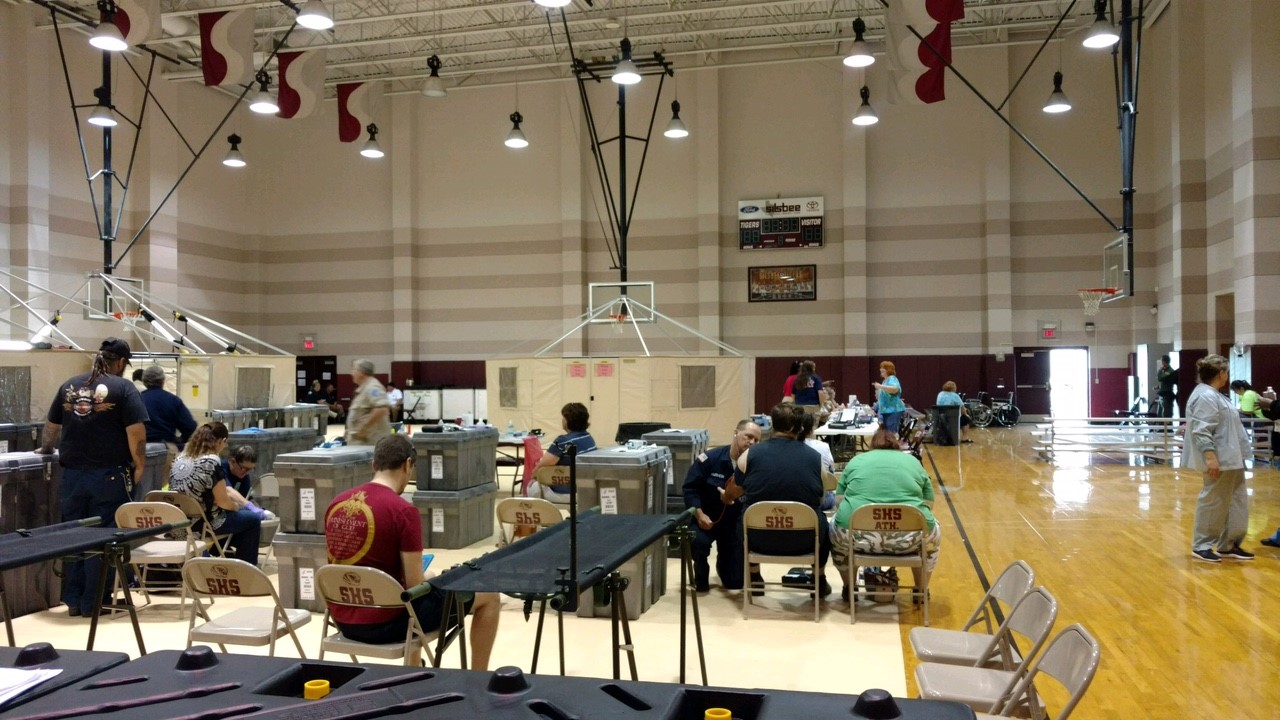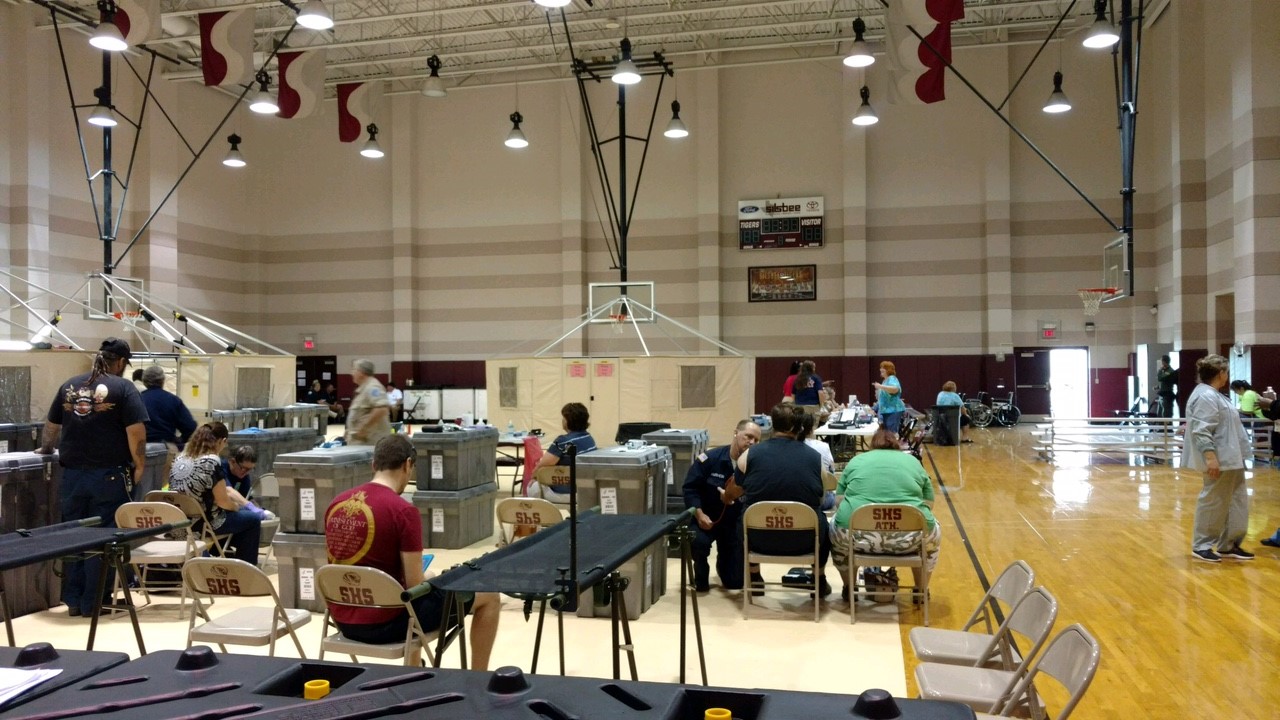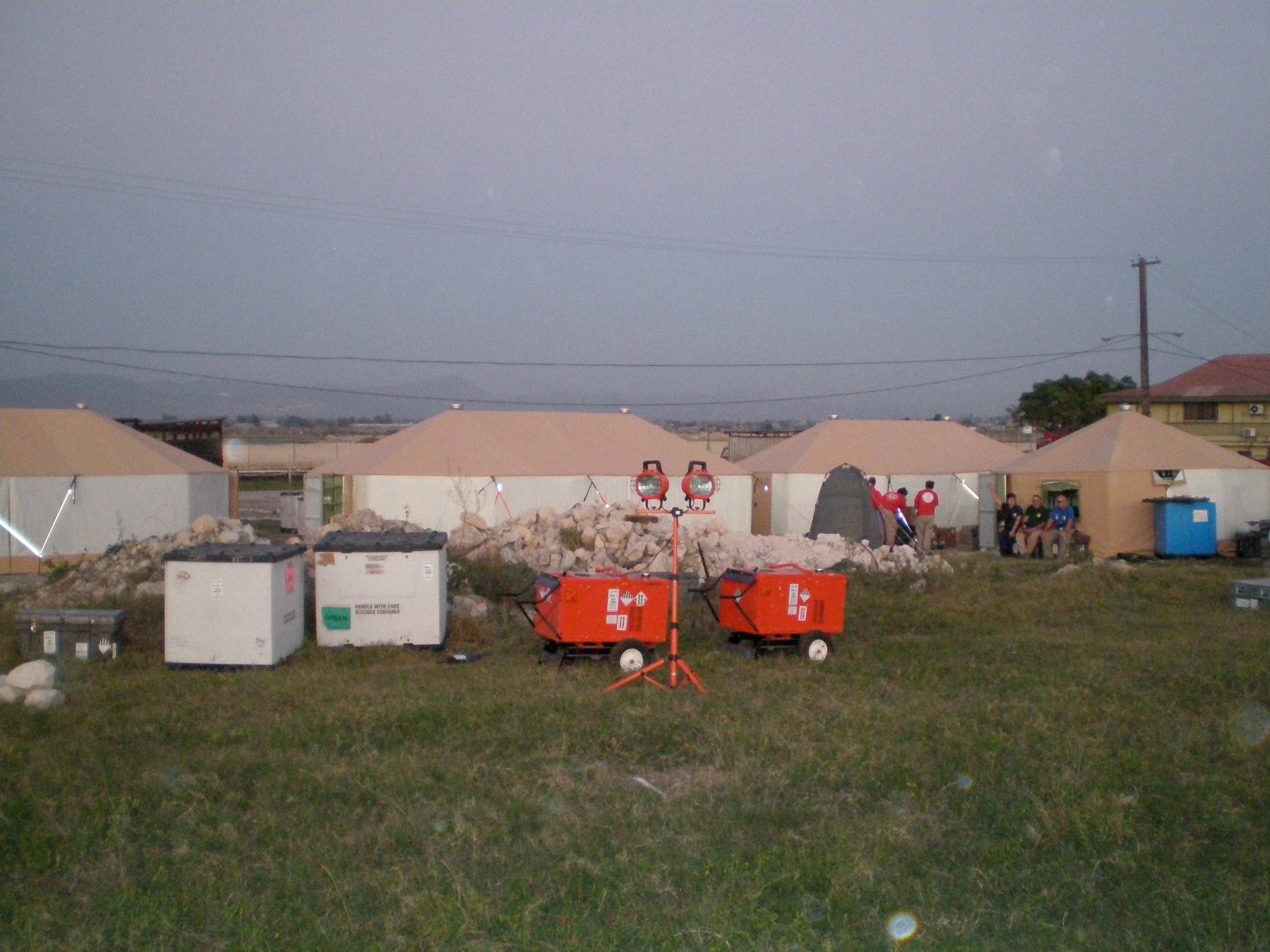Saint Leo Faculty & Students Assist in Hurricane Relief Efforts
Saint Leo University's faculty and students share their experiences assisting in disaster relief.

Saint Leo University's faculty and students share their experiences assisting in disaster relief.

 Over the past several weeks, Hurricanes Harvey and Irma caused considerable damage and impacted the lives of millions of Americans.
Over the past several weeks, Hurricanes Harvey and Irma caused considerable damage and impacted the lives of millions of Americans.
Some members of the Saint Leo University community have proudly lent a helping hand in the disaster relief efforts following the difficult results of these powerful storms.
Dr. Wendy Nesheim, an instructor in the school's Emergency and Disaster Management online graduate program, spent two weeks in the small town of Silsbee in eastern Texas. She works for an organization called GA-3 DMAT, which is a disaster medical assistance team under the U.S. Department of Health and Human Services.
The Stone Mountain, Ga. registered nurse, who has taught courses for Saint Leo for nearly four years, says everyone she dealt with during this trying time responded very positively to her team.
"We are on call certain months throughout the year," she explains. "If there is a presidentially declared emergency, our team is deployed to provide medical care to local residents who have been affected."
Her group set up its base of operations in the gym of a local high school. The team puts up privacy tents and then gets to work.
"We triage and treat patients," she says. "After Harvey, many people couldn't get to traditional medical facilities, so they came to us. We can treat patients who need stitches, have broken bones, are in labor, those having a stroke or heart attack, or those who need prescriptions for medications. We had helicopters and ambulances transporting patients because of the major flooding."
Alex Houlious of Tallahassee, Fla. is a student in the MS in Emergency and Disaster Management program. The firefighter was deployed to Texas to assist in Harvey relief efforts as a member of Team Rubicon USA, an organization founded by veterans that provides disaster aid.
Houlios spent six days in Houston.
"They had us routing supplies and making sure the construction and cleanup guys had the equipment they needed," he recalls. "We basically had to gut people's houses to make them ready for reconstruction. It was definitely a humbling experience because the devastation there puts things into perspective."
Another Saint Leo graduate student, Tim Pearson, assisted with Hurricane Irma relief in Florida as part of a tactical search and rescue team.
"Thankfully, we didn't have to be used too much," Pearson says. "But it was interesting to watch the overall response."
The Wesley Chapel, Fla. Resident has worked for Hillsborough County Fire Rescue in the Tampa area for 12 years and currently serves as a driver/engineer. He just started working on his Master of Science degree in Emergency and Disaster Management with a specialization in Fire Science Administration.
According to Nesheim, rebuilding from a disaster always starts at the local level.
"In this field, we use the term resiliency, which basically means getting back to normal," she says. "In the case of Texas, the community was particularly engaged in making sure it got back to where it wanted to be."
Nesheim can relate to her students who are balancing an online master's program with working out in the field.
"I remember sitting between two generators and surrounded by National Guard members doing my posts and responding to instructors when I did my own online coursework."
She believes having faculty with real-world experience teach in any academic program is critical.
"A program offers more credibility when you have instructors with real-world perspectives from being out in the field," she says.
She adds that emergency and disaster management is a relatively new field – and that there is not a lot of academic research out there in this area.
 Other Relief Efforts
Other Relief EffortsIn addition to helping in Hurricane Harvey relief, Nesheim has had the opportunity to travel the world to support those in need. She aided in the recovery from the 9/11 attacks, spent time in Haiti after its devastating earthquake in 2010 and was in southeast Asia for the massive 2004 earthquake and tsunami that killed over 230,000 people.
"For the tsunami, I worked with Project Hope. We were on a huge Navy hospital ship called the USNS Mercy that could hold about 1,000 patients. We couldn't dock, so we had to transport patients from land to the ship by helicopter. It was just extraordinary. The culture was also very unique. There is obviously a huge Muslim population there, so as Americans, we had to be receptive and respectful to the cultural traditions of the patients. I remember them being so thankful for us being there."
Houlios and his fellow colleagues in the field of disaster management know one thing for certain – there will always be a need for people like him.
"It's truly amazing how much damage Mother Nature can do," he says.
Are you intrigued by a rewarding career through which you can help others? Learn about Saint Leo University's MS in Emergency and Disaster Management program now to help you take your career to the next level.
Photo credit: The photographs in this article were provided by Dr. Wendy Nesheim and are used with permission.